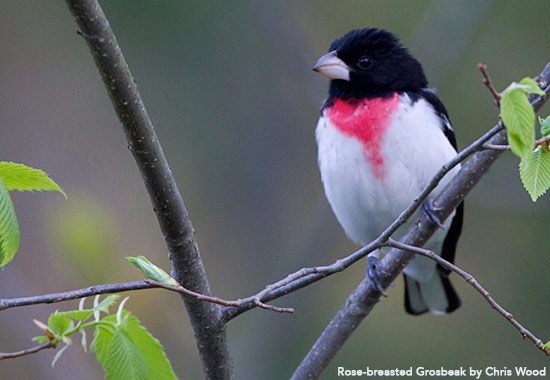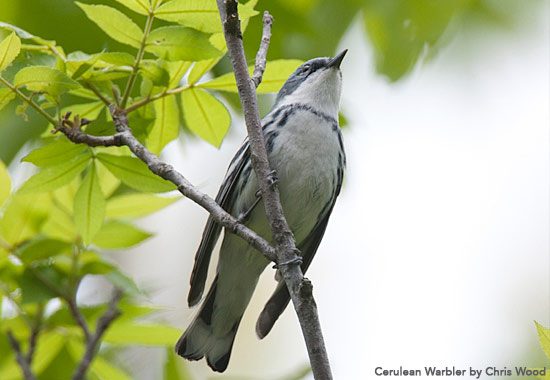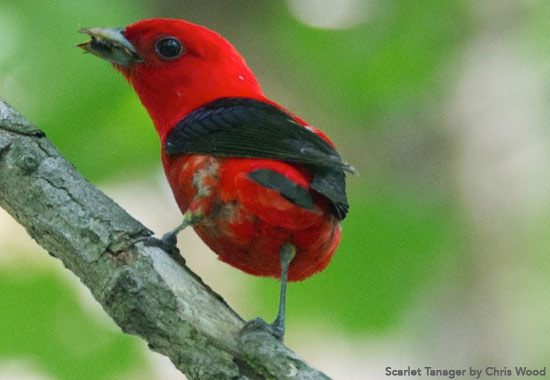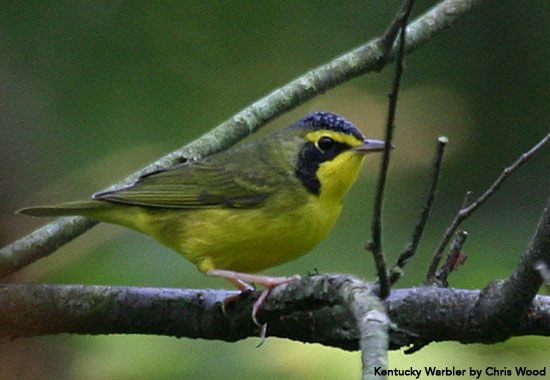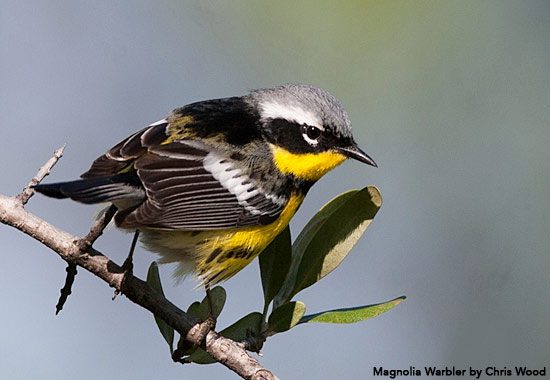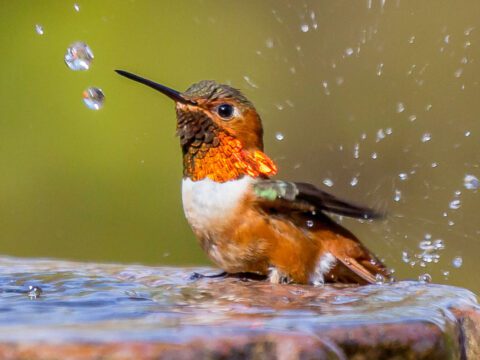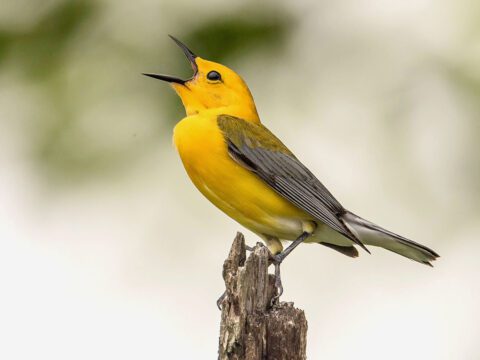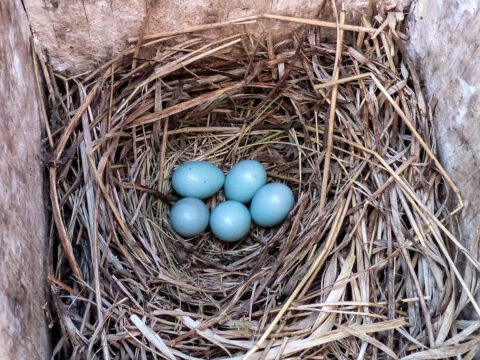Migration Forecasts Help Birders Target Best Date for a Big Day
April 23, 2013
Rose-breasted Grosbeak by Chris Wood. 
Cerulean Warbler by Chris Wood. 
Scarlet Tanager by Chris Wood. 
Kentucky Warbler by Chris Wood. 
Magnolia Warbler by Chris Wood.
As Team Sapsucker prepares for their Big Day in Texas, our new BirdCast project is helping pin down the best day of the week for their attempt on the North American record—and its weekly reports can help birders all over North America, too.
On a good day, springtime can deliver spectacular birding. But picking that day can be tricky. Migrants by the millions are flooding into North America, but are they coasting on tailwinds, battling through thunderstorms, or being buffeted by crosswinds? For decades, biologists have noticed that great sightings often go along with certain weather patterns—particularly the near-mythical “fallout,” when northerly winds stop migrants in their tracks as they arrive on the Gulf Coast after an all-night flight from Mexico.
Recently, our BirdCast project began formally compiling weather reports, radar maps, recent sightings, and other data into specific, weekly predictions about what birds are moving, and where they’re likely to be seen. The project aims to develop detailed predictions for conservationists and environmental planners—today, their regional reports are already proving useful to birders like our Team Sapsucker as they plan their Big Day. Thanks to your pledges, each extra species they find helps raise more funds for conservation.
We caught up with BirdCast project leader Andrew Farnsworth, who is also a member of Team Sapsucker, to see how the forecast looks for Texas this week. His short answer: Thursday could be really good.
The elements are already in motion, Farnsworth said. A cold front pushing across central Texas is likely to bring north winds and rain to east Texas and into the Gulf of Mexico by tomorrow morning. “It’s an almost ideal situation to create a fallout,” he said. “Later tonight, birds are going to take off from the Yucatan, parts of the Mexican coast, and the Caribbean, because conditions are really good down there. Once they take off, they don’t usually turn around.”
As they near the end of their flight they’ll run into the cold front, with its rain and opposing winds, and they’ll start looking for the nearest shoreline to make landfall. (See a more complete breakdown on BirdCast’s weekly forecast page.)
Thursday should dawn cloudy but calm. The exhausted migrants should spend the day where they landed, resting and replenishing their energy stores. Meanwhile, Team Sapsucker will spend the morning scouring the Texas Hill Country, 300 miles away, and aim to arrive at High Island, on the coast, at around 5:45 p.m. They’ll have about two and a half hours of daylight left to look for 20+ warbler species as well as other migrants.
At least that’s the way it looks right now. “Whether it’s going to be as epic as it appears on paper is hard to say,” Farnsworth said. “But I think the chances for a fallout are better than 50:50 and increasingly better with each passing forecast that I’ve seen.”
There’s still time to help spur Team Sapsucker along by making a pledge for each species they see. Thanks to sponsor Carl Zeiss Sports Optics, 100 percent of every pledge goes directly to aid conservation.
More like this:

All About Birds
is a free resource
Available for everyone,
funded by donors like you
American Kestrel by Blair Dudeck / Macaulay Library
